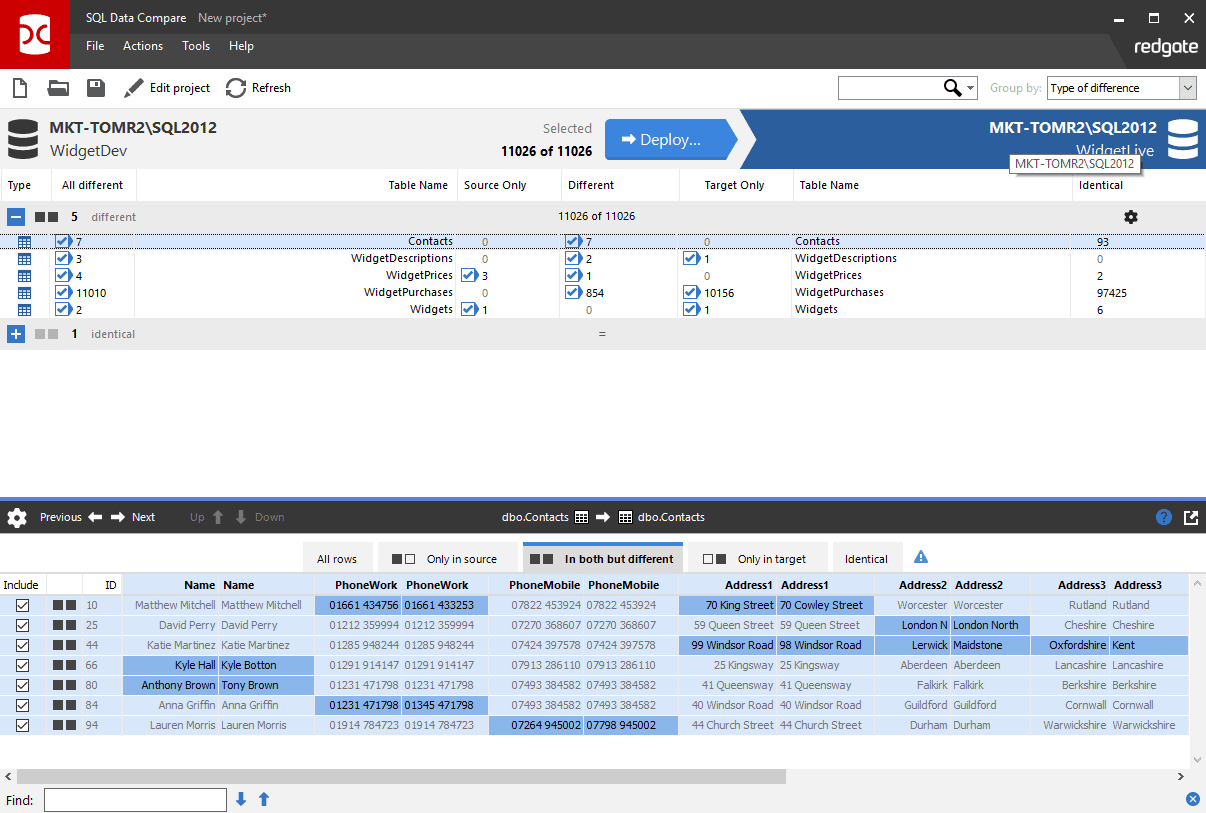Sql Server Database Comparison

The SQL Server Database Engine controls data storage, security, and processing. The relational engine processes queries and commands and the storage engine present in it is responsible for managing database files, pages, tables, data buffers, indexes, and transactions.
Difference Between Oracle and SQL ServerOracle provides a relational data management system for internal use called as Oracle server. The framework is based on the relational database. The data objects can be assessed by the users using SQL language. We can scale Oracle based on the requirement and is used widely all over the world. Microsoft developed SQL server that allows users to write queries and execute them based on their needs.
Any processes such as transactions, analytics, and business intelligence is handled in corporate environments using SQL. Online support is provided in SQL and also warning messages are displayed for errors. OracleThe feature of the Oracle database to be used for enterprise grid computing helps in the creation of modular servers and storage where the storage mechanism is achieved by creating logical and physical structures. The Database can be accessed only using a client-side program. The server-side memory structure is referred to as the SGA (System Global Area) which is responsible for holding cache information related to SQL commands, data buffers, log history, and user-specific information. Scaling, rerun production workloads for both batch and online real-time user, support for virtualization techniques, VMWare support, high availability, and uninterrupted processing makes it a beautiful and elegant database to be used. Web development, programming languages, Software testing & others SQL ServerThe controls data storage, security, and processing. The relational engine processes queries and commands and the storage engine present in it is responsible for managing database files, pages, tables, data buffers, indexes, and transactions.
Triggers, views, stored procedures and other database objects are the ones that are taken care of by the Database Engine. This can be used for deploying, building, and managing applications located on-prem or on the cloud. The data present inside it is usually connected, avoids redundancy, thereby providing greater data integrity. The newer version has built-in performance tuning metrics, real-time operational analytics, data visualization strategies hybrid cloud support using which the can run the same application on either on-prem or on the cloud as they deem fit to lower organizational cost. Head To Head Comparison Between Oracle and SQL Server (Infographics)Below is the top 14 difference between Oracle vs SQL ServerKey Difference between Oracle and SQL ServerBoth Oracle vs SQL Server are popular choices in the market; let us discuss some of the major Difference:The language used in SQL Server and Oracle RDBMS is different even when they both use different forms of Structured Query Language.
Grim dawn forums. MS server used transact SQL whereas Oracle makes use of PL/SQL Procedural Language and a Structured Query Language. The main difference lies in the variables, syntax, and procedure handling along with built-in functions. The provision of grouping procedures together into packages is something that is not available with MS SQL Server.The other major feature between these two databases is the capability of transaction control.
A transaction is defined as a group of operations and tasks to be treated as a single unit. MS SQL will by default commit and execute each command/task as a unit and roll backing is difficult. The commands to make this process a lot more efficient are BEGIN TRANSACTION, COMMIT, ROLLBACK, END TRANSACTION, etc.
Whereas in case of Oracle every database connection is a new connection treated as a new transaction. All the changes are made in memory and nothing is actually done explicitly unless an external COMMIT command is not used. Database objects organization is different for both the databases. In the case of MS SQL, all the database objects such as views, tables, and procedures are sorted by database names. The logins assigned to the users are granted access to specific objects and databases.

The file in an SQL server is of a private, unshared disk type whereas in case of Oracle all this is arranged as per schemas and shared among the relevant users. Every schema and users’ accesses are governed by the roles and permissions assigned to that group.
- воскресенье 19 апреля
- 14